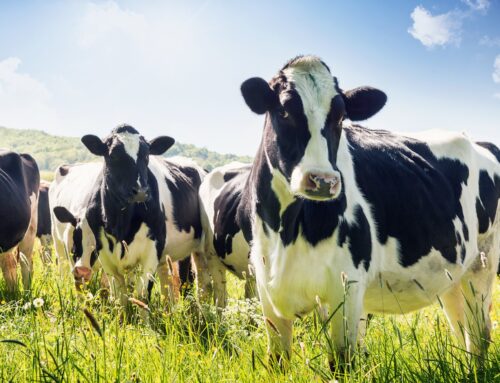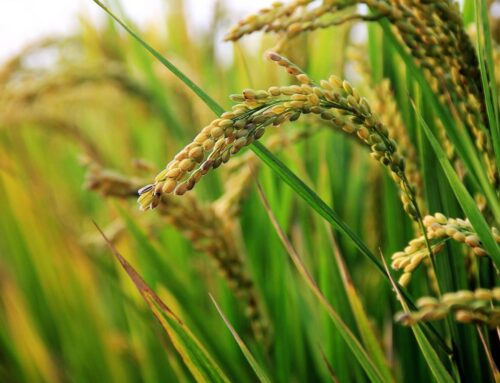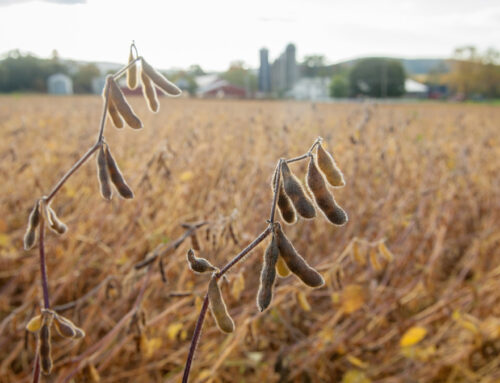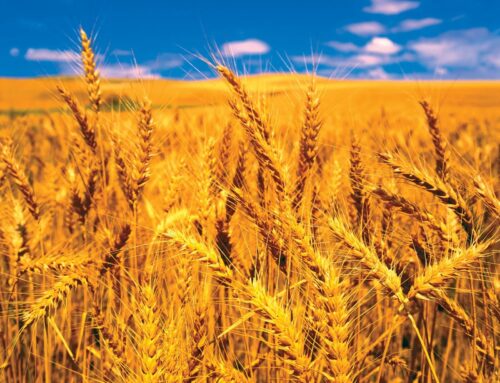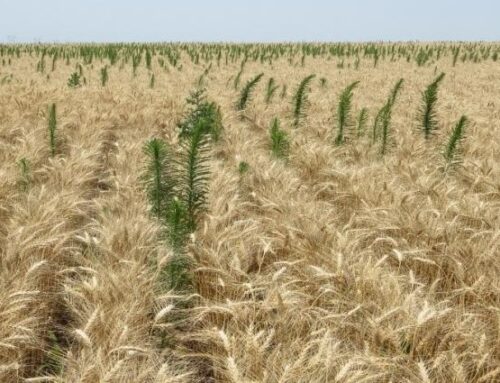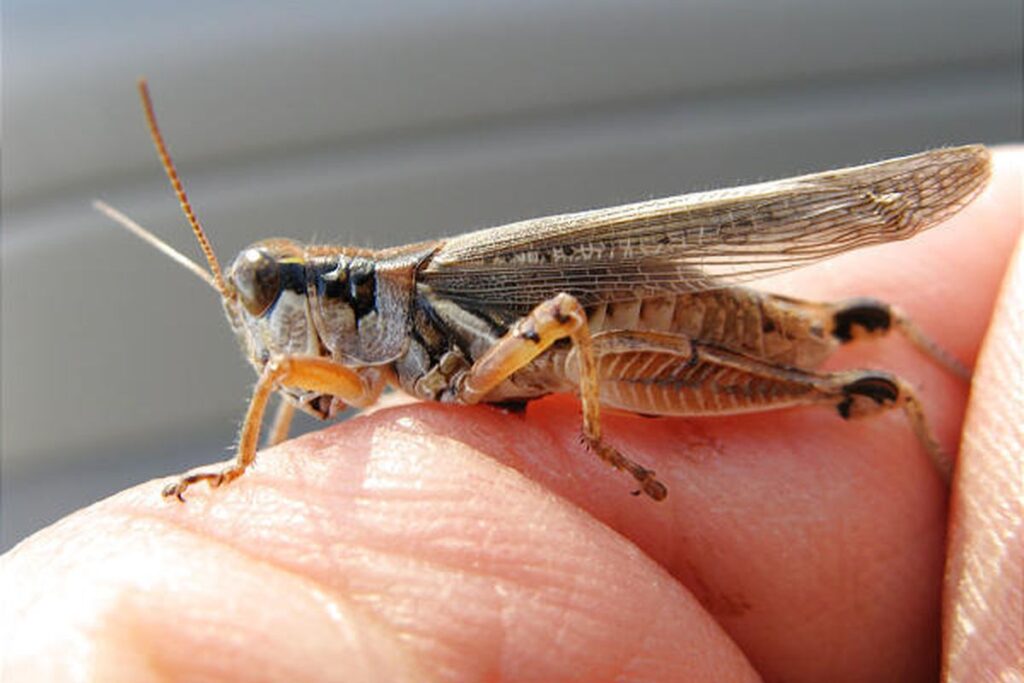
Heat and drought aren’t the only issues farmers in the drought-stricken North and West are dealing with. Grasshoppers are also destroying pasture grass and crops.
“In my 25 years of farming and ranching I’ve never seen anything like this,” says North Dakota producer Trevor Steeke. “They’re eating it down to nothing. You can see my 300 acres of barley, all you can see is they’ve eaten it to the ground. There’s nothing left.”
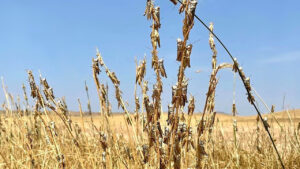 Steeke has been chronicling the drought and now the grasshopper damage. In a normal year, he would get 1500-3000 bales on a thousand acre field. This year, he got 53.
Steeke has been chronicling the drought and now the grasshopper damage. In a normal year, he would get 1500-3000 bales on a thousand acre field. This year, he got 53.
“It’s going to be a tough year, a lot of tough decisions are going to have to be made,” he adds.
He’s already cut his sheep herd from 150 to 38, as everything he grows, he uses for feed for his sheep, cattle and goats.
Across the border, near Wibaux, Montana, Syndi Miske’s photos and videos tell much the same story.
She says hoppers destroyed their barley. Their crop insurance adjuster approved grazing portions of their barley fields, but she’s still worried about the damage these insects could cause.
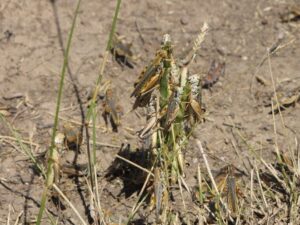 “It’s one thing on top of another this year, says Max Robison, a Bowman County Extension Agent who says the grasshoppers are the worst in the Rhame area, near Steeke’s ranch, but they’re on the move.
“It’s one thing on top of another this year, says Max Robison, a Bowman County Extension Agent who says the grasshoppers are the worst in the Rhame area, near Steeke’s ranch, but they’re on the move.
“They’re moving east and most of the guys that have still have some green grass or anything that’s tall enough they’re seeing a lot of small grasshoppers right now. I’ve been seeing more and more large ones from east so I think they’re just going to keep moving that way and take out whatever they can,” adds Robison.
He says the best thing producers can do, is keep a watchful eye out for the insects, and consider spraying to keep the populations down.
“It’s just it’s just historically one of the worst things that we’ve ever been through,” says Steeke.
Meanwhile, producers like Steeke are holding out hope that rain might still come.
“You have to keep your head up and keep moving forward,” he says.
Read the original article – CLICK HERE
